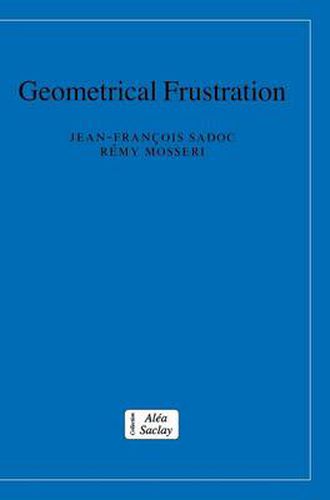Readings Newsletter
Become a Readings Member to make your shopping experience even easier.
Sign in or sign up for free!
You’re not far away from qualifying for FREE standard shipping within Australia
You’ve qualified for FREE standard shipping within Australia
The cart is loading…






This book shows how the concept of geometrical frustration can be used to elucidate the structure and properties of non-periodic materials such as metallic glasses, quasicrystals, amorphous semiconductors and complex liquid crystals. Geometric frustration is introduced through examples and idealised models, leading to a consideration of how the concept can be used to identify ordered and defective regions in real materials. Then it is shown how these principles can also be used to model physical properties of materials, in particular specific volume, melting, the structure factor and the glass transition. Final chapters consider geometric frustration in periodic structures with large cells and quasiperiodic order. Appendices give all necessary background on geometry, symmetry and tilings. The text considers geometrical frustration at different scales in many types of materials and structures, including metals, amorphous solids, liquid crystals, amphiphiles, cholisteric systems, polymers, phospholipid membranes, atomic clusters, and quasicrystals. Of interest to researchers in condensed matter physics, materials science and structural chemistry, as well as mathematics and structural biology.
$9.00 standard shipping within Australia
FREE standard shipping within Australia for orders over $100.00
Express & International shipping calculated at checkout
This book shows how the concept of geometrical frustration can be used to elucidate the structure and properties of non-periodic materials such as metallic glasses, quasicrystals, amorphous semiconductors and complex liquid crystals. Geometric frustration is introduced through examples and idealised models, leading to a consideration of how the concept can be used to identify ordered and defective regions in real materials. Then it is shown how these principles can also be used to model physical properties of materials, in particular specific volume, melting, the structure factor and the glass transition. Final chapters consider geometric frustration in periodic structures with large cells and quasiperiodic order. Appendices give all necessary background on geometry, symmetry and tilings. The text considers geometrical frustration at different scales in many types of materials and structures, including metals, amorphous solids, liquid crystals, amphiphiles, cholisteric systems, polymers, phospholipid membranes, atomic clusters, and quasicrystals. Of interest to researchers in condensed matter physics, materials science and structural chemistry, as well as mathematics and structural biology.